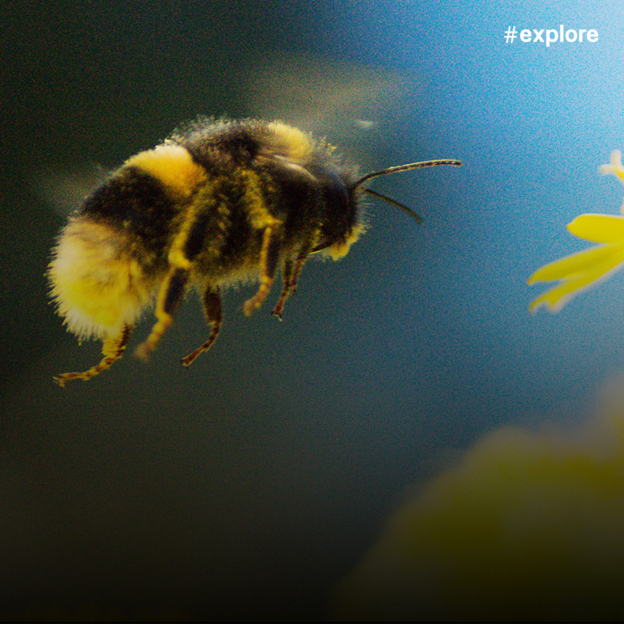Good question, next question.
Why can bumblebees fly?
How the round insects stay in the air.

Good question, next question.
How the round insects stay in the air.

12 january 2023
Unlike wasps or hornets, bumblebees are considered rather calm and peaceful winged insects. They owe this reputation to the fact that they usually move around alone, rarely act aggressively, and, last but not least, because of their furry, round appearance. However, this very characteristic has led to a longstanding physical suspicion: their bodies are too thick, or their wings are too small for flight. So how can they fly anyway?
The so-called Bumblebee Paradox allegedly traces back to an incident reported by students of the German physicist Ludwig Prandtl. According to the story, in the early 1930s, during a dinner, a biologist asked an aerodynamicist why a bumblebee could fly. The aerodynamicist quickly calculated the bumblebee's weight and wing surface on a napkin and concluded: the lift generated should not be sufficient for flight.
If a bumblebee were as large and structured like an airplane, it indeed wouldn’t be able to fly. However, it is not. Unlike an airplane, its wings are not rigid airfoils but consist of an extremely elastic and flexible protein called resilin. This protein can stretch to three times its length without tearing. This flexibility allows bumblebees to move a relatively large volume of air despite having small wing surfaces.
Unlike airplane wings, a bumblebee's wings are not rigidly attached to its small body. Instead, the furry insects rotate their wings in circular motions—at a staggering 200 times per second! This principle is also used by helicopters. During this rotation, a vortex forms at the leading edge of the wings. British zoologist Charles Ellington first observed this so-called leading-edge vortex in 1996 in a moth. This vortex provides moths, bumblebees, and other insects with the necessary lift to take off.
Additionally, bumblebees possess a special joint in their wings that has not yet been found in bees or other insects. This joint allows them to bend their wings while flying, further enhancing their aeronautical capabilities. When researchers fixed this joint in place, bumblebees could lift 8.5% less weight. Without such restrictions, these insects can easily carry twice their body weight in flower pollen through the air.
Bumblebees are true masters of flight. They can not only move forward and sideways but even fly backward. Surprisingly, they can also reach remarkable heights. On Mount Everest, bumblebees have been observed flying at 5,600 meters. Theoretically, they could even surpass the peak of the world’s highest mountain. In laboratory experiments, bumblebees have successfully flown under conditions simulating the thin air found at an altitude of 9,000 meters.
This is an article from #explore. #explore is a digital journey of discovery into a world that is rapidly changing. Increasing connectivity, innovative technologies, and all-encompassing digitalization are creating new things and turning the familiar upside down. However, this also brings dangers and risks: #explore shows a safe path through the connected world.